By now word has spread about the hotly contested $6 tax on WhatsApp calls in Lebanon, but are the mass protests really about a tax hike a social media app?
The Lebanese government has already announced that it will not go through with imposing the tax… yet, the people are in the streets.
In other words, it is no longer about WhatsApp.
The same phenomena occurs in nearly every country that experiences a revolution, as the demonstrators in Lebanon are calling their movement. The Lebanese people were living under extreme pressure, and this small tax was simple the spark that lit the flame of social unrest.
THE BACKGROUND
Historically, around 72 different sects of religious and ethnic groups have managed to live together peacefully in Lebanon.
In 1943 when Lebanon achieved independence from France, the French implemented an agreement (which was never officially included in the Lebanese constitution) aimed at maintaining stability and protecting the country’s minority groups, which. The agreement stipulated that high ranking posts in the country would be distributed among the main 12 religious groups in Lebanese society, as determined by a census taken in several large cities.
According to the statistics collected, Christian Maronites formed the majority of Lebanese population, and so, the president was chosen from among this group. Muslim Sunnis composed the second largest religious population, and so the position of prime minister went to one of them. As the third largest religious group, Shiites were represented by the head of the parliament… other religious denominations were also awarded their own representatives either in government or parliament.
The distribution of power wasn’t limited to the primary government positions: it even applied to other high ranking positions in the government and even in the military.
However, because the statistics were collected in large cities while most of Lebanese people (especially Shiites, Sunnis, Druze and Orthodox Christians)… in reality, the majority of Lebanese society is made up of Shiites.
The political system was essentially forced on the Lebanese by aristocrats who attained high ranking political positions– today, things are set up such that their children are inheriting their posts.
Since independence, the Lebanese people (of whom only one fourth even live inside the country) have been fighting to change this law, but the influence of aristocrats and landlords, as well as foreign countries, have managed to keep the structure intact.
The main reason all Anarchist movements have failed in Lebanon is that they were led by members of the Aristocrat class, who were predominantly fighting against the Lebanese government rather than for its people.
The ruling Oligarchy uses religious ethnic differences to keep the people divided against one another.
THE LEBANESE CIVIL WAR
While there were a variety of reasons for the Lebanese civil war in 1975, the main reason was that people were tired of the political system and wanted a change. Many Muslims believed that they made up the majority of the Lebanese population, and therefor, that they should be represented by a Muslim president.
The war ended in 1989 with the Taif Agreement, which was essentially the same as the one instituted by the French: the oligarchy happily signed off.
The only outcome was the creation of a new oligarchy which came to power and entered into conflict with the old one.
Demonstrations engulfed various parts of Lebanon on Friday. Many protesters called for the resignation of the government and demanded the "downfall" of a political class that has ruled the country since the start of its 15-year civil war in 1975 https://t.co/KKnzUOwDcc
— CNN International (@cnni) October 18, 2019
Although this was not at all what the Lebanese people had fought for, they were all tired of war and hoped that the new agreement would mean a new Lebanon.
They also hoped that the countries engaged in proxy wars in Lebanon and the Persian Gulf would help rebuild the country and cover its excessive debts.
THE REGIONAL SITUATION
While the Lebanese were counting on their Arab brothers to help them rebuild their country, the Middle East as a whole entered a period of seemingly unending crises. Events such as Iraq’s invasion of Kuwait forced the Persian Gulf Arab countries to come to terms with their own problems.
Some political groups, mainly those among the old oligarchy, rebuked the Taif Agreement, and the debate instead began to focus on electing a new president and the country after the end of Amin Jamayel’s term in office (a man of the old oligarchy). The commander of the Army between 1989 and 1990 General Michel Aoun (the country’s current president) seized power effective until new elections were held in accord with the Lebanese constitution. At this time, civil war broke out among the Marooni Christians between followers of the old and new oligarchy who considered themselves eligible for presidency.
In the end, the Syrian Army (which was in the country serving as a mediator) took power in Lebanon themselves, open a new era of Syrian influence in Lebanon.
Michel Aoun and many other Christian leaders were forced to flee from Lebanon, and pro-Syrian President was elected.
Alongside Syrians inside the country and across the world, we have been closely following the Lebanese uprising. Over the past eight years we have suffered many losses, but seeing the protests in Lebanon is a moment for pride and celebration.
Photo: Ammar Abd Rabbo. 1/ pic.twitter.com/D2xZGtjz22— The Syria Campaign (@TheSyriaCmpgn) October 21, 2019
RESISTANCE AGAINST THE SYRIAN DOMINANCE OVER LEBANON
Syria dominated all aspects of political life in Lebanon since 1990 till 2005.
Lebanon was faced with $40 billion in debt, but then prime minister, the late Rafiq Al-Hariri, was able to bring the situation under control through his deft efforts in international relations, attracting financial support and investment to the country.
After the Israeli Army withdrew from southern Lebanon in 2000, many Lebanese started to call for withdrawal of the Syrian Army too. Debates started between those for and against Syrian rule in Lebanon began to take place at all levels of society.
Lebanon has run consistent budget deficits since ending its civil war 30 years ago, growing debt service costs having compounded the problem. pic.twitter.com/NjwbgW56xl
— Ali Al-Salim (@alialsalim) October 21, 2019
Al-Hariri was murdered on February 14 2004, his allies accusing Syria of having murdered him while pro-Syria forced accused Israel.
Domestic and international Pressure demanding a Syrian withdrawal increased.
Syria’s supporters gathered in the city center on March 8 to support Syrian Army presence in the country, while their opponents gathered in the same center on March 14 demanding the army’s withdrawal.
The country was essentially divided into the March 8 group and the March 14 group, as they came to be known.
At the end the Syrian Army had to withdraw from Lebanon on April 2004 leaving the country divided into two groups.
AFTER SYRIAN WITHDRAWAL
Omar Karami, a well known member of the oligarchy, was then appointed prime minister. Everyone hoped that after the withdrawal of Syrian Army from Lebanon, the country would be able to begin a positive economic growth cycle, but ]the debates between the March 8 and March 14 factions instead drove the country into a political dead-end.
ISRAEL ATTACKS LEBANON
With the country heavily in debt and having had most of its crucial infrastructure destroyed during the long civil war, Lebanon was at the brink of crisis.
While Lebanon struggled to recover, the Israeli Army the country, ostensibly in order to eliminate Hezbollah and other Lebanese resistance members, kicking off the 33 day war in July 2006.
The war ended with Israel having destroying all the remaining infrastructure in the country, including what had only recently been built.
#Lebanon exhibits drones used in Israeli attack#Israel pic.twitter.com/n4Zxf7ElDn
— Press TV ???? (@PressTV) September 19, 2019
Naturally, Israel was after more than eliminating Hezbollah: it wan’t to cripple the country leaving it unable to stand up to Tel Aviv.
Iran offered financial assistance to Lebanon, allowing them to rebuild much of what Israel had destroyed, while the Persian Gulf Arab countries neglected their fellow Arab country, and even supported Israel behind the scenes.
Many Arab leaders were jealous of Hezbollah Secretary General Hassan Nasrallah’s victory over Israel, and became worried that the victory would increase Iranian influence throughout the region.
A new era had arrived in the middle east, characterized by the leadership and influence of Iran and Hezbollah.
DOHA AGREEMENT
In May 2008, the Lebanese government (led by Foad Al-Senura, an ally of Saudi Arabia and late Rafiq Al-Hariri) tried to use the army to disarm Hezbollah, a move which provoked a strong military reaction from Hezbollah who took over Beirut. The country was faced with a challenging new situation as Hezbollah’s supporters started a year and a half long strike in demanding the government resign.
At the end of the turmoil, Lebanese political parties gathered in Doha-Qatar and composed the so-called ‘Doha Agreement’ establishing a new National Unity Government with a complex structure of checks and balances designed to make sure all parties were fairly represented.
As the March 14 movement had the upper hand in parliament, Saad Al-Hariri (the son of the late Rafiq Al-Hariri) was appointed prime minister of the first National Unity Government in 2009.
FALL OF FIRST NATIONAL UNITY GOVERNMENT
Though there was a great deal of expectations from the new National Unity Government, the debates around the international investigations on the killing of Rafiq Al-Hariri took the government into a dead end and on June 13, 2011. 11 ministers belonging to Hezbollah resigned from the government in order to break apart the government’s unity.
Mr. Saad Al-Hariri’s government had fallen and Najib Mighati was appointed as prime minister for the second time. He then established the so-called Second National Unity government.
2011 also witnessed the beginning of the war in Syria which led to millions of Syrian people fleeing from Lebanon, a country struggling with its own domestic shortages.
NATIONAL UNITY GOVERNMENT TURN INTO BLOCKED GOVERNMENTS
The Structure of the National Unity government was organized such that each side was all too easily able to block the other, leading to a virtual stalemate.
Everyone wanted their share of the income and projects, and refused to vote for a project which didn’t give them their share of the pie.
All subsequent National Unity Governments were unable to accomplish anything. When the legal presidential term of President Michel Suleiman finished in 2014, the ministers couldn’t even agree on how to run the coming parliamentary elections.
With Mighati having resigned in 2014 and no-one stepping up to take his place, President Michel Suleiman decided to appoint Tamam Salam (a member of old oligarchy) as prime minister just a month before the end of his presidential term. Salam was tasked with holding the government together until the following elections took place.
It took the ruling Oligarchy two and a half years to agree on someone to step up in accordance with Lebanese law.
Saad Al-Hariri was appointed prime minister again and promised to form a new National Unity Government. He did so over the first 40 days of 2016, and, once again, people expected the new government would solve their problems, but, once again, all of the measures he attempted to implement were blocked. Hariri resigned at 2017 after being held hostage in Saudi Arabia.
The newly elected Lebanese President Michel Aoun refused to accept the resignation given that Hariri was being held hostage in Saudi Arabia, insisting that Hariri return to the country to deliver his resignation speech, and suggesting that Kingdom’s actions had severely damaged its relationship with Lebanon.
After several months of debate, Hariri was released and returned to Beirut where he was received with open arms.
#Hezbollah’s leader Hassan Nasrallah speaks up on #Lebanon’s protests with a message that can reverberate from #Iraq and #HongKong to #France, #Haiti, #Honduras, #Ecuador, #Catalonia, and #Chile.pic.twitter.com/ObTYHqQiAc
— lobo (@thewolfreports) October 19, 2019
He owed his freedom to the President and Hezbollah who had blocked his resignation, leading to new expectations that there would be some kind of solution to the government’s stalemate.
In the following elections, Hezbollah and its allies were able to win the majority of chairs in the Parliament while the previous Parliament had been composed of a majority of members from the March 14 Group.
In 2019, Hariri managed to form his new government following six months of consultations, but the country’s hopes were dashed once again, as the government remained deadlocked in spite of everything that had happened.
WHAT IS HAPPENING NOW
This extensive background information is critical to understanding what is taking place at the current juncture.
It is also important to understand that Lebanon’s banking system is private and secretive, much like Switzerland’s.
The Lebanese have often used their banking system to cover their funding deficits.
Many people considered the Lebanese banking system a safe place to hide their money, particularly illegally earned money. Most Arab leaders keep their savings in Lebanon.
Lately, the Americans began pressuring the Lebanese central bank to give up its policy of secrecy, believe that Iran was taking advantage of the Lebanese banking system to circumvent American sanctions.
The Lebanese central bank was forced to take measures to satisfy the Americans which left many investors to fear their savings might also compromise, resulting in a large amount of capital flooding from the Lebanese banking system.
In Beirut
1.5 million people, 1/4 of Lebanon’s entire population, protested against corruption, economic inequality and injustice today.
Standing in Solidarity with Lebanon.
Just WOW! ✊????✊???? ???????? pic.twitter.com/J0BbDkzBQq
— StanceGrounded (@_SJPeace_) October 21, 2019
The major financial troubles that came as a result eventually led to the political turmoil that we see today.
The government is still at a standstill: no decision can be made as the various factions blame one another and shut down their efforts.
The national debt has increased to more than $80 billion and unemployment rates rose to above 37% as the country’s oligarchs continue to fight for their share of the profits, completely indifferent to what happens to the people.
Millions of refugees from Syria and Palestine are absorbing any excess resources the country has, leaving the Lebanese people cut out altogether.
https://twitter.com/sahouraxo/status/1186362849670651904
Until a couple of years ago, the Lebanese people were afraid that they would be dragged into the Syrian war… now, they have reason to fear they will be dragged into the fight between Iran and Israel. Saudi Arabia and the US also pose a series threat.
Relations between Lebanon and the Persian Gulf Arab countries are still poor, while Mr. Hariri himself has had serious trouble with the Saudis.
Iran, the main supporter of Hezbollah and the parliamentary majority, is faced with heavy US sanctions which prevents the group from investing into the country’s economy.
The new generation no longer believes in the sectarian divisions on which the country was built, and see the ruling oligarchy as warlords rather than peacekeepers.
The new Lebanese generation believes that the country should be ruled by a technocratic government with ministers being selected according to their abilities rather than religion. Many believe that the oligarchy is to blame for the level of corruption the government currently faces.
So, the impossible happened. #Lebanon #Beirut #لبنان_يتنفض pic.twitter.com/fZtIsDWSUF
— Kareem Chehayeb | كريم شهيب (@chehayebk) October 21, 2019
The people are tired of oligarchic rule. They are in the streets demanding the destruction of the ruling system and no longer believes that the leadership reflects their interests… the Lebanese people are not sure if they should cry or laugh regarding all of this absurdity.
Everyone in Lebanon knows that if Hariri’s government falls it would take a long time for a new government to be formed, leaving the country without any decision makers in the interim.
Despite that the demonstrators come from all sections of Lebanese society, without a leader or reasonable demand it is impossible for them to turn the protests into a real revolution.
It is obvious that a part of the political oligarchy is trying to ride the waves and use these demonstrations for their own purposes, mainly destroying Doha agreement which obliges the prime minister to form National Unity Governments, while the other section of the oligarchy is trying to keep it intact.
#Lebanon Plan to Address Protest Grievances Falls Short on Accountability – If history is any guide, Hariri’s economic plan, absent accountability, won’t deliver on needed reforms. https://t.co/UXLv0ARGIx @hrw
— Lama Fakih (@lamamfakih) October 21, 2019
It is very hard to imagine that the people in the streets will get what they want, at least, in this way… but at least the Lebanese government will be forced to take action to keep the streets calm.
The newest generation is fed up of the sectarian concepts the country is built on and wants a fundamental change: these demonstrations are likely only the beginning of their movement.







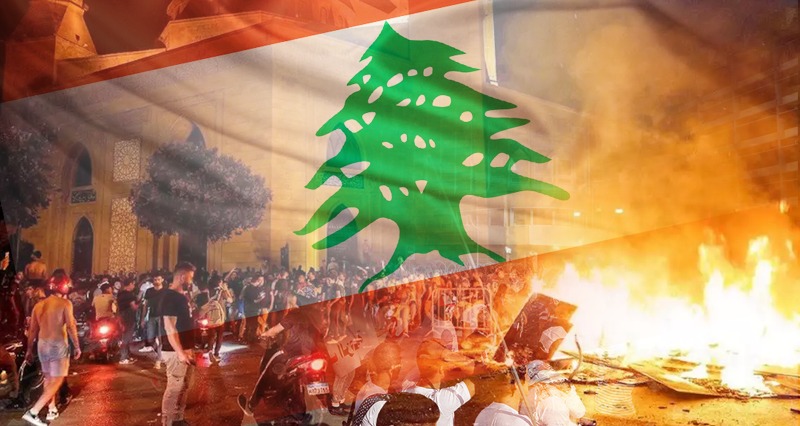
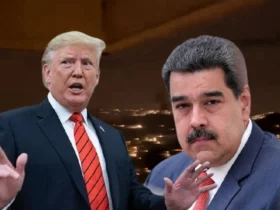
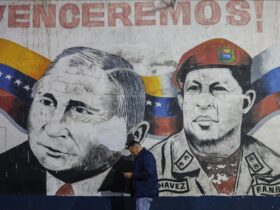
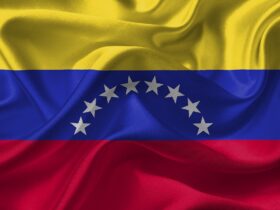

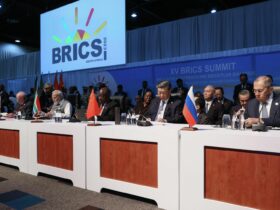
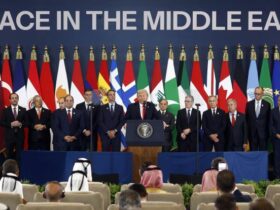
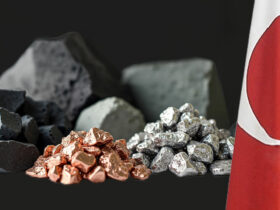


Leave a Reply